#1 Online Marketing Agency
(604)305-3040
2069- 88 West Pender Street, Vancouver
9:00 AM - 6:00 PM
|
Free shipping is becoming a must strategy for those who want to thrive on online shopping. Many customers now expect to have those fees waived so they can purchase something from a particular website. In fact survey suggests that a merchant increase sales chance by 65% when customers do not have to pay for shipping charges. But as most us are aware, “there is no free lunch”. As retailers know, it is expensive to ship a parcel from One Point to the other. And for many different reasons, shipping carrier rates are increasing over time. What this means is: Someone must pay for those shipping costs. It’s well documented that if we provide a free service, this influences heavily on consumer behavior because clients have a perception that they are getting an amazing deal. There are many examples about this: Free Checked Bags when flying, Free coffee refills in Restaurants, Free samples in grocery stores… So nowadays we see many merchants selling their goods with shipping fees included at the transaction. 90% of online shoppers view free shipping as a major incentive to opt-in purchasing online, while 86% of abandoned carts happen because of shipping costs related to the order. But remember, there is no free lunch…so the truth is: these savings are typically hidden somewhere else. In order to apply the free shipping strategy, a business has to find the right balance of driving more conversions and keeping operations profitable. Playing the free shipping game means finding the right balance of driving more conversions and not breaking the bank. So, what options do small to mid-sized online retailers have? Those are the few options we often suggest our partners: a) Insert the shipping cost into your price This is Free Shipping 101. Raise your price to accommodate the shipping cost so you can provide the shipping for free. The key is to find the perfect balance of rising the prices of your products to the point that you can provide Free Shipping and not lose sales due to cost of the product. b) MOQ- Minimum Order Requirement You can make the client spend a certain minimum amount of dollars to activate free Shipping. This works wonders because shipping more products in one box will save you tons of logistics costs that you can pass it on to the customer as free shipping. Remember that the idea is to make the customer know he is getting a great deal, so making him put one extra thing or two in the cart works really well. By the way, 93% of customers will take action to qualify for free shipping! c) Keep an eye on your margins There is no point on getting into a transaction if you lose money after it is done right? So even though you want to increase the amount of sales by offering free shipping, you should only do it if you can actually afford it. Normally there is a small unwritten rule on ecommerce shipping: Things that are cheap, are hard to be shipped for free. Imagine a key that you sell for $8 and the shipping cost is $8. When the transaction is done, you won’t make any money. Your margins are different for each of your products, but make sure they do have a comfortable sales price that can offset the product cost itself so you can keep some of the margin. Conclusion
To be a successful ecommerce store you should try to go with the Free Shipping Strategy ASAP. Numbers are favoring those who make it successfully. There is not a simple solution that is suitable for all the online players, but they must be able to find the balance between sales volume, profitability and expenses. Ingols Digital helped a company in Vancouver to do this well. Vancouver Best Cookies was transformed from a simple bakery to a master in delivering yummy cookies for free while being profitable! Worth checking it out! Before sharing my story, I wanted to make a quick disclaimer. This, by all means, have nothing to do with how I judge or see stereotypes (good or bad) of the world… However, I just wanted to point out that analyzing the particulars of a specific region might help us understand some behaviors, and why not, stereotypes of particular areas of the world. Let's talk about Canada, for instance. This country is fascinating because it was basically founded on English and French customs and principles. When we study these two European countries, we realize they are so different from one another that they have a history of battling one another. And yet, Canada is, by many different standards, an inclusive society that cherishes differences! The French are mainly located in Quebec and New Brunswick. In contrast, the English are in all the other provinces in its majority. Go to Montreal, most of the people will speak French with you. At a restaurant, most of the menus are in French (except for some that are bilingual). Speak to a local and notice they use their hands while talking, just like French people! In Toronto, everything is in English, to the point that it feels like Quebec and Ontario are in two different countries. Would it make sense to establish a business in Quebec and put all the signages in English? Well, I am inclined to say no. Simply because your audience will be in, its majority, francophone! And if you make things harder to your client, marketing 101 teaches us that this is a no-no! Within the anglophone community, we also see a difference. Take Vancouver on the west coast. They speak the same language as Toronto - English! But when you get to know people in both cities, it feels like you are talking to two different beings from two different planets! Vancouverites love nature, to the point that you're likely to hear something about trees, nature, and CO2 emission (and real estate, always real estate) in any conversation! Torontonians' main priority has always been about work, work, and the Raptors winning the last NBA Title! How do we market the same product or service to those two different cities, even though they speak the same language? That's a marketing challenge, alright…but having this solved will be of great avail! In terms of online marketing strategy, this is gold! If we know what ticks each community, we can develop specific keyword analysis and personalize our SEO Services to the particular needs intrinsic to that specific region. Take, for example, a canoe reselling business that sells across Canada. Selling canoes in Vancouver might be as simple as putting up "Canoes for Sale" to boost traffic on Google! After all, they love canoeing there! The same canoe in Quebec could possibly be offered as "Canoë à Vendre", cuz well it's in French! Selling canoes in Toronto would require a more effective approach like - "Ways to disconnect from Stress" - because of the big city-no time vibe in Toronto. Having a canoe can be a great solution to decompress! My next example will touch on the cultural particulars of a country where we have many clients - Brazil (where people speak Portuguese, not Spanish!). Brazil is the biggest country in Latin America, with many big cities, spread thousands of miles apart. It's always interesting to see the different behavior patterns within each region. Take Sao Paulo and Rio de Janeiro, two of the country's biggest cities- apart from over 300 miles from each other. Sao Paulo was built over the sweat of industrial development and hardworking immigrants from Europe, Asia, and the Middle East. Rio was established as a former capital of the country, with bureaucrats and beautiful beaches bordering the Atlantic. Needless to say, because of the history of each city, their people are entirely different. Paulistanos (people from Sao Paulo) pride themselves on being hardworking and perceive the Cariocas (people from Rio de Janeiro) as the bon-vivant type and, to a certain extent, a bit lazy. Cariocas love the fact that the city has a more chill vibe, its people easygoing. They tend to see the Paulistas as no fun and uptight. When we try to build an online marketing strategy on the national level, catering to the specific regionalities of this continental Portuguese speaking country, what do we do? When building our SEO Strategies, understanding that the Paulistas are more urban-oriented will require us to crack our heads and develop keywords related to this attribute. The same thing applies to the samba-loving, beach-going Cariocas. Coming up with an SEO plan to sell to them will require a deeper learning of casual behavior! Crazy stuff happens when two big cities in the same region but that are so different from each other collide. Paulistas refer to cookies as bolacha. Bolacha for Cariocas is called biscoito. Stereotypes fly over our ears - Paulistas on Cariocas: "Yep, they don't work… They just want to have fun…only think about going to the beach, play soccer and samba all day"! Cariocas on Paulistas: "Those guys are uptight - they are jealous cuz we have beautiful beaches, and we can enjoy it whenever we want"! I have to go back to my disclaimer above! I'm not trying to judge those stereotypes, whether one may perceive them as derogatory or true. However, as a strategy focused Online Marketing Agency, I just believe that within those stereotypes lie great information that can be explored to build a very successful Marketing Strategy! Rival cities in the world: New York vs. Boston, Toronto vs. Vancouver, Johannesburg vs. Cape Town, Rio de Janeiro vs. Sao Paulo, Shanghai vs. Beijing. It is not all about sports anymore! Effective Marketing is about knowing rivalry attributes or regional characteristics to leverage information and provide easiness to our target market! Confession: I love at least one aspect of every city I have been on this planet. And I have a few things that I don't like about some either. But people…regardless of where they come from, there are cool dudes and dumb dudes everywhere! Let's just be happy and learn to understand each other! Leo Written by Leo Ang @ Ingols Digital Business! What is the best way to achieve your goals in your company? The answer is: To solve daily problems and provide value to your customer in the process. What does “solve daily problems” mean? It means what it is supposed to mean. As a business owner, you stumble upon an issue that needs to be taken care of. You tackle it and make it disappear as fast as you can. If you do it consistently, you create a habit. That habit brings your clients results, and they will return for more. Big Example: Say you run a small restaurant. This restaurant has 16 tables, and it is free seating. What this means is that the moment a patron comes in, they may choose where they want to sit. Now, this is what it would look like if customers were allowed to select their seats: A patron comes in, and seeing decides to sit on the opposite side of your staff, right at the end of the restaurant. Another customer comes in and sits on the opposite side of the first customer. And that repeats for two more parties that enter the restaurant. What would be the consequence of this free seating policy? If you are working with a tight crew, they have a higher chance of getting tired faster. They would also be running on the floor randomly (based on the order of the clients’ arrival), and when they put a ticket to the kitchen, they have a higher chance of missing it. The kitchen runs based on the flow of orders. If they come in on a random orderly fashion, you will experience customers getting their food later, or maybe a table getting their food partially, etc. Is this a problem? I believe it is. How to solve it? Look at the map below. If we can organize the tables in sections, and we place a greeter or host in the entrance of the restaurant to escort the patrons to their table, we can organize the space of the floor and thus the inflow of orders and food. How could we fix this issue? On the map, we divided the same number of tables in 3 sections. When the first customer comes in, we will direct him to table 1. When the second customer comes in, we’ll place them on table 2, the third to table 3, and so forth. We will only allow a customer to go to table 7 if the original six are full. So when you deal with the seating issue, you can focus all your waiters’ efforts in one area of the restaurant. Your service will be faster, food will arrive on time, and you will help the kitchen by being organized. In this case, by organizing the flow of customers, you can provide better service to them! That is efficiency in solving problems. In our company, we cater mostly to small businesses, which means deal directly we the business owners, talking strategy, and discussing what to do and not. What we notice in dealing with them is that if we can give them more than they are expecting and get the results they want, their satisfaction improves, and they will gladly refer you to new clients. What does this mean? Usually, this is how you hire an online marketing agency: give them the scope of the project, they will provide a detailed blueprint of what they can do, and they can’t do, you agree with the terms and start working together. It’s not uncommon that unpredicted issues in the scope determined by agency surfaces and needs to be dealt with to achieve the results you had in mind when you hired that very agency. Most of the agencies (this is also from my personal experience as a client) will say: “I can’t do this” or “That’s not within our scope” or “We need to hire someone else to do it.” Now bear with me, I am not talking about new software implementation, or something massive as adding a new social media in a super-specific language like Mandarin, for instance. I am talking about…” hey, something interesting just happened in the neighborhood, can we talk about it on our social media within the hour? Can you please create a post about it?” These types of things. Those agencies often neglect them because they were not in the scope, but as I see it, this agency is not solving the clients’ problem. I have learned over the past years as a business owner that my best service partners are the ones that were doing extra without me requesting or knowing it. And that is fantastic because I never feel like IO have to bug these partners for little things, which puts a strain on the working relationship. I don’t even bother to bug those partners, which I would if results were not happening, and I noticed they were not proactive in their role. Of course, there’s a gray area. It’s not fair to online marketing agencies to expect their work to deviate so drastically from what they planned just so the customer can get a load of free services. However, it’s also not smart to see a strategy not going through when you know that if you add a few things or two to your daily activities, it can improve the results of your work. As SEO experts, we learned how to reverse engineer websites, data, and social media channels so we can funnel the traffic to our client’s business online. Looking at the big picture, it makes sense to reverse engineer the approach on Customer Service! How we cater service practices should be “everything in your power to bring those customers to the client”! Examples: Work on Sundays, overnight, add that paid feature to your client, write content when your client can’t give you, add that extra post on his social media channel, he is not giving you the material to finish your assignment? Figure out a way to help you in this regard, don’t just wait! MAKE THINGS HAPPEN! For your client and the sake of a prosper partnership! In the long term, you are continually solving their problems, you are generating value to their business, and you become an essential partner for their success! It pays off!!! Leo
Written by Leo Ang @ Ingols Digital Business! Partner at Ingols Digital @ingolsdigital and Ingols Imports. 5/7/2020 HOW-TO GURUS AND FLOWERSGurus - beware of them. I don't know about you…but with re-targeting software popping up everywhere I often find thousands of business gurus, mentors, and/or coaches that are willing to teach me so many things online, especially after I bump into an SEO service package or an online marketing company that I am researching about. Those gurus mesmerize me with promises of wonderland, and I often get caught on their net of get-rich-quick-dreams but the main question I make myself is: If this guy is so good at this, why is he teaching other people instead of implementing his ideas himself? I've compiled a shortlist with the "make-extra-money" DIY quick-solution-promises I've seen lately. Reader advise - it always starts with "how-to".  Need a guru? Need a guru? I've compiled a shortlist with the "make-extra-money" DIY quick-solution-promises I've seen lately. Reader advise - it always starts with "how-to".
The list goes on. Just google "how to" and let the predictor show you what is trending right now. Regrettably, most of these courses promise you amazing results but cover topics in such a shallow way. From what I gathered, the guru always promises you'll realize your dream by following a few simple steps. However, one must understand that the path to financial freedom or business success does require many other intangibles that we are not able to get by just reading the ebook, watching the masterclass, or taking the course. If doing business was so simple (not saying easy, but simple), all of the graduates from Harvard Business School would be killing it now! And that's not true! When I talk about intangibles, I mean discipline, focus, courage, vision, creativity…things that set extraordinary business minds apart from the folks that are just trying to score extra bucks. By any means, I am not a successful business owner yet if I compare myself to guys like Forbes Billionaires 2020, or even the guy running the printing shop for 25 years down the street. However, my partner and I did work our butts off for the last eight years, building something from scratch and having the revenue stream that provides us with a great, comfortable life! Our path is no different than most small-medium business owners. We struggled, we made mistakes, we got scared, we learned, we made some deals and lost a few… and those experiences built those intangibles I am referring to. Being a business owner (not dissing any quick-fix gurus here) takes courage because you are essentially putting your money (or someone else's) into an idea that you are betting will work because you believe you can deliver on it! In other words, you have something to lose. The road to being stable from that point on isn't at all linear. Maybe your pricing strategy is incorrect; maybe customers don't like your face, perhaps you don't know anything about marketing. But to survive, you learn from those little hiccups. If you do survive the mistakes you made, that means you are now smarter and stronger, just like an evolved Pokémon. Take this family-run Toronto flower business that has been open since the 80s as an example. Look at their business today, and you'll be amazed. They are located in an exclusive neighborhood, cater to large corporate accounts, and their average ticket sales are $300 and above. Here's how they started. They moved from Taiwan in the late 70s, with three kids on their back. Not having a formal education in Canada, they decided to put their entire savings into a fruit stand in a busy street north of Toronto. The father would be in charge of bringing the goods, the mother would help running sales, and the kids would study in the back. There were no gurus back then. ;) Their main products were perishables (fruits and vegetables), and they laugh about it until this day because the Dad didn't know a thing about basic logistics to run the stand. By basic logistics, I don't mean the fancy FIFO concepts we learn in business school. I'm talking about "you bring fresh fruit to the display, make sure you put the old ones to the front so customers can grab the older ones. If you mix the old and the new batch, one will rotten, and everything will be spoiled". The Dad didn't do this properly, so the business often saw the loss of their products. Being in a low-margin business sucks because you need to control your costs like a maniac to break even. To no one's surprise, their business went bust. They lost almost everything. While they were caught trying to find whose fault it was that the apples, oranges, and bananas were not carefully taken care of, they also realized that another product people were buying in their small shop was flowers. They remembered that when the Mom wrapped them out to give to the customer, she would do it in such an attractive way, mixing leaves, cellophane paper, ribbons… that they loved them! Eureka! That moment was gold…No other flower shops in their area would do this back in the day. So they decided to focus on selling flowers and decorate them with ornaments on the side. Now they could not only charge their customers for the products but also add value with their arrangements good taste, which gave them some margin to play around with (remember, decorating abilities is a service). Business boomed! Still no gurus. With the lessons learned from the fruit example, the Dad knew he needed to get flowers and replenish them fast as they were also perishable. The Mom was amazing at making the arrangements…and on top of that, the service was spectacular and friendly! Customers would continuously go back for more! Today, Flower Plus is one of the oldest and most respected flower stores in Toronto. Celebrities, business people, and designers all go there to buy the best arrangements they can find in the city for their homes and loved ones! From rotten oranges to a successful business, lessons were learned continuously! In essence, most of the how-to guides "gurus" are pushing online are shallow and do not cover the heart. Not saying they are useless or that you won't be able to do anything with them…but running a successful business should always be about improving those intangibles and generating value to customers. Developing a scheme that is good for you and your customers with discipline, and hard work will, eventually, get you your six, seven, or eight-figure income! Leo Written by Leo Ang @ Ingols Digital Business Savvy in Chief! Partner at Ingols Digital @ingolsdigital and Ingols Imports. Social media strategy is one of the main concerns conveyed by our prospective clients when they approach our digital marketing agency. Part of these prospects is new small businesses that have never had to deal with Facebook, Instagram, Pinterest as a business tool. However, many of those prospects are established small companies that already have social media accounts and are facing challenges in that area. Today we'll explore some of the social media strategy issues that established small businesses usually face gathered from our own experience in helping our clients. Understanding your social media issues The first thing we do when evaluating a prospective client's online presence is to diagnose both the website's performance (with a big focus on SEO performance) and their social channel's statistics (with a focus on targeted engagement). Amongst the many social media strategy issues we see, some of them are pretty common across the board. 1) Lacking engagement Some of our clients have a good following, but their content isn't breaking the engagement barrier. Social Media can be a tough task if you don't have a good strategy - producing content is one thing, but engaging your audience is an entirely different game. That's especially tough for small businesses that may have limited resources. Consider: Do you know who your audience is and the things they want to consume? Is the content you're sharing attractive to your customer avatar? Are you leveraging each social media platform to garner maximum engagement? Do: Design your client's avatar. There are many free tools to do that, and one of our favorites is Hubspot's Make My Persona tool. Once that's done, listen to them and learn to speak their language so you can find ways to communicate with your audience in each one of your social channels. 2) Struggling to convert The audience in each one of the social channels you use will probably expect different things from the content they consume. Ultimately your content should be driving conversion, but I dare say most of it is seen as entertainment. Consider: Is your content seen as entertainment, or is it driving conversions? Do you have a clear communication strategy for each social media channel? Do: Build a content funnel that matches your client funnel and develop content specific to each level. Below we share an example of a general content funnel. 3. Content Generation Social media content generation can be a daunting task if you don't have the right tools and resources available. One of the most significant challenges faced by social media managers is the fact that there's never enough time to post as much content as needed, with the right hashtags, at the right times, and in the proper channels. Most of them also lack competitor analysis in their strategies. Consider: Do you have the right tools (systems and apps) and resources (team) in place? Do you have the right information (competitor analysis) available? Do: There are many social media management tools in a wide range of prices. Find one that fits your budget (there are several free tools) until your business needs become more complex. At the same time, doing competitor analysis will be crucial in designing your strategy and creating consistent and quality content. Tools that help you find keywords used in your industry and by your competitors are game-changers. 4. Managing crisis Small businesses rely heavily on prospective and actual client reviews, but what happens when someone leaves a stinky comment or a bad review on your page? A person wearing all the hats might not know how to generate content that won't trigger an adverse reaction from your brand's audience or manage those reactions. Consider: Do you have a social listening strategy in place? Creating a crisis management plan for protecting your business' reputation. Do: Listen to the conversation that surrounds your industry, your businesses, and your brand. Social media management platforms like Hootsuite or Sprout Social allow you to track keyword mentions, hashtags, and commentary from several social channels. Have a basic crisis management action plan that determines who, what and when to respond when an issue comes up. Takeaway Never stop monitoring your social media channels as this will not only let you gain insight from people's reactions to your business/brand but also your competitors. It'll also allow you to quickly identify a crisis and act on it effectively, even spinning it back in your favor. Effectively managing different social media channels can be a taxing task for small businesses. Even with the wide range of tools in the market that can help with several of these tasks, it can still be pretty expensive and time-consuming. Many of our clients that have tried managing all of their social channels by themselves have reported that they seldom had enough time and energy to work it, despite spending serious cash on apps every month. At Ingols Digital, we have a suite of apps and systems in place to support our clients with their social media needs so they can focus on their business. We have a team of specialists that help small businesses build their online reputation, increase brand awareness, and perfect Google exposure locally, regionally, or nationally. ;) In the search engine battle, from a historical standpoint, Google has come out as the undeniable winner. This week we were curious to know more about these two gigantic tech companies' history and trajectory and here’s what we learned. Before Yahoo! and Google, there were Archie, CERN, and Jumpstation In 1990, just one year after the invention of the world wide web (www), we were introduced to Archie. Archie was a centralized way to find information online by crawling through an index of downloadable files. Soon after Archie, we welcomed CERN, Jumpstation, AOL, Yahoo!, and Google. Each one of these platforms offered us their tweaked idea of what a search engine could be. In only four years (1990-1994) we went from Archie, that could only make the listings but not the content available, to Yahoo!, which was the very first website able to offer their users a collection of pages and not only data. The rise of Yahoo! In early 1994 Jerry Yang and David Filo, two graduate students from Stanford University, created Jerry and David’s Guide to the World Wide Web, which was a collection of their favorite websites. Months later, as their website grew in popularity, they renamed it YAHOO which stands for Yet Another Hierarchically Organized Oracle. Less than a year later the domain name yahoo.com was created and in two years they raised $33.8m after going public. On “ How Jerry's guide to the world wide web became Yahoo” Andrew Clark writes: "Throughout the rest of the decade, Yahoo was the undisputed leader on internet portals. When the company went public in 1996, its shares rocketed by 154% in a day and within three years, Yang and Filo were worth $8bn each. Things were going like a dream - until a little known private competitor called Google came along". By the end of the decade, Yahoo! had positioned itself as a media company and acquired Rocketmail, ClassicGames.com, Yoyodyne Entertainment, and GeoCities. Their stocks hit an all-time high of $108/share in January 2000 and unlike many other tech companies, they managed to survive the Doc-com frenzy. The new kids on the block While Yahoo! enjoyed its position as the most popular website and search engine in the United States, Stanford Ph.D. students Larry Page and Sergey Brin were working on a tech company of their own. Their search engine, created out of their dorm room, was called Backrub and later, Google. Their mission was “to organize the world’s information and make it universally accessible and useful”. In the year 2000 Yahoo and Google signed an agreement to allow Google’s search engine to power Yahoo’s web search. However, that partnership ended when Yahoo dropped Google and returned to using its own technology to power its search engine capabilities. While many companies, including Yahoo, were letting talent go when the Dot-com bubble burst, Google quickly started to gain traction by hiring those same talents laid off by the other Silicon Valley tech companies at great rates. Google was the upstart - but it executed so quickly and so successfully that it left the other companies behind. A force to be reckoned with Company culture also played a huge part in Google’s becoming a search engine giant. They refused to operate pop-ups and ads form sites they considered to be negative for a very long time. "More sophisticated techies came to appreciate Google's computational elegance and its willingness to shun the "portal" model that crammed ecommerce down their throats. Within months, Google became one of the most popular sites on the Web - and not long after that, "Google" became a verb." (Josh McHugh on Google vs. Evil) While Google was engineering the Google File System, which would function as a platform that could serve a diverse range of use cases for all the services Google would offer as part of its future ecosystem, Yahoo persisted in its strategy of acquiring different businesses and services. At the same time, it was laying off thousands of employees around the globe. Less than two weeks after Google’s Alphabet became the world’s most valuable public company, Yahoo put its core business up for sale. While its search engine, advertising, apps, and maps, Android and YouTube remained under Google, all of the company’s other ventures became separate firms under Alphabet. Mission and Identity Google’s message and identity have been clear from the beginning. As it’s stated on their website “Google's mission is to organize the world's information and make it universally accessible and useful.” This message is front and center in the company’s about page, internal communications and has been described by the company's employees as a guiding principle behind everything they do. Yahoo! on the other hand, has changed its mission statement several times in the course of its existence. Their website lacks a mission statement and my attempts to find an updated statement were time-consuming. Here’s what I found from indirect sources: As a leader in global daily habits like email, entertainment, news and sports, we strive to inspire, delight and entertain. By infusing our products with beauty and personality driven by our users, every Yahoo experience feels made to order. According to a researcher who tracked Yahoo’s press releases, they have changed their mission statement over 24 times in 24 years. It’s clear that Google has nailed its brand strategy while Yahoo got somewhat sidetracked. Vision and fate When Google decided to incorporate Alphabet, Larry Page explained that while they’ve “(...) long believed that over time companies tend to get comfortable doing the same thing, just making incremental changes. But in the technology industry, where revolutionary ideas drive the next big growth areas, you need to be a bit uncomfortable to stay relevant”. With Alphabet, they could prompt innovation in other areas without interfering with the vision and mission of Google’s main products. Yahoo’s executives Marissa Meyer’s description of her vision for the company’s future paints a completely different stance when it comes to steering the company to remain competitive: "As digital content becomes richer, as search and mail become richer, we need to change what the format of that guide is, as we move to mobile, wearables, TVs, cars, and all the other formats in the future. So to have great SEO Services, we’re focused on search, communications, and digital content, all of which we think are incredibly important parts of that role as a guide, and those are the products that we’re investing in and building on. " While Google has been clear of its mission and vision throughout time, Yahoo has often been reactive to environmental changes int the tech world. After our research, it’s become clear that Yahoo’s lack of a clear mission has made it difficult for clients to understand the brand’s positioning and Google was not only an alternative but one with a clear purpose and that delivered on their promises. Author Written by Dani Rodrigues @ Ingols Digital Small Business Listener! Partner at Ingols Digital @ingolsdigital and Ingols Imports. How to be found online is a question we are very familiar with! When we started our online business we built our website and waited for sales to happen. We waited and waited and waited, until we learned to develop a clear message, how to leverage social media into our favor, maximize our websites and SEO, amongst other things. It’s the same for almost every client we’ve met through our digital agency – they have a website that doesn’t rank and has no traffic OR they want to build a website and think that alone will generate leads for their businesses. Well, being found online isn’t as easy as it may seem! Now more than ever in our time, your website should be your most important source of business. Customers of all age groups are interacting more with businesses today than they were a year ago and. The average monthly website traffic has increased by 13% in the month of March, compared to February, reports Hubspot. Despite the surge in website traffic and marketing and sales team engagement with the public, the Hubspot report shows there was a lower response to those efforts. “Average marketing email volume increased 29% the week of March 16, while open rates increased by 53% the same week. Across the month, the open rate increased by 21% overall”. Even though businesses are facing many challenges now, there are also lots of opportunities to boost your business’ digital performance and get you to actually be found online, which is the first step in creating a profitable business. If on one side potential clients are wary of spending their money at this time, on the other, they are spending more time online and prospecting, exploring their options, looking to connect with the businesses they may eventually buy from. That is a great opportunity to educate your potential clients on your products or services. Offer free content, engage with your audience on your social media channels, and build the connections that will hopefully convert into sales in the future. WHAT DOES IT MEAN FOR BUSINESSES AND HOW CAN YOU TURN THESE PIECES OF INFORMATION INTO ACTIONABLE STEPS TO BE FOUND ONLINE? 1. MAKE YOUR MESSAGE CRYSTAL CLEAR Is your message clear? Is it intentional? Having these attributes is key to be found online and standing out from the pack. You can easily do that by narrowing down the scope of the information you put out there! Do this by defining your customer avatar or buyer persona. If you don’t already have a template you can use Hubspot’s free “Make my Persona” tool! Organizing your potential client’s information with the prompts below will help you quickly build your customer avatar and maximize your chances of making your message clear to your target audience!
2. BE STRATEGIC WITH YOUR SOCIAL MEDIA PRESENCE Social media can be overwhelming if you don’t have a clear strategy to integrate your message across all the channels you use. Asking questions like “Am I promoting a brand, a product, myself?” or “Am I interested I building a community of like-minded people or potential clients” will help you decide which platforms best suit your strategy to be found online. Consider these steps in order to craft a clear strategy:
3. HAVE A KILLER WEBSITE As we said before, having a website is no guarantee to be found online! You need to make sure your website is maximized for optimal navigation – you don’t want your visitors to get frustrated because they can’t find what they are looking for! The most important elements for a successful website are:
4. MAKE SEO A PRIORITY The most important attribute of a website is its capacity to be found online! We see a lot of websites that are great portfolios but are far from being the cash machine any website should potentially be. By making SEO a priority you’re giving your website the best chance it can get to not only be found but to bring in sales! Building your Google ranking through SEO takes time and this is why it’s important to start working on it now! Google has over 200 ranking factors but some of the most important are:
We hope these actionable steps will help you to be found online and with wok and dedication ramp up your website visits and conversion rates! AuthorWritten by Dani Rodrigues @ Ingols Digital Small Business Listener! Partner at Ingols Digital @ingolsdigital and Ingols Imports. In today’s blog post I wanted to share with you a few tips for working from home in times of COVID-19. The drastic changes we are experiencing today in all aspects of our lives are unprecedented. Perhaps that’s why many of us are having such a difficult time to adjust physically and mentally to this new routine. Taking care of your physical and mental health is crucial to keep your brain in sharp shape to be able to remain productive in these trying times. At Ingols Digital we have tried and selected a few apps and habits that have made it possible for us to find a good balance between life and business in these trying times where we’re working from home. Let’s get right to it and dive nose-first into our health tips and prepare ourselves to boost our minds and build emotional resilience to overcome the new challenges we are facing now. Healthy Habits to support your physical and mental health while working from home: Keep a healthy sleep schedule Even though having enough sleep may be seen as a luxury for many, it’s now widely known that sleep is necessary to, amongst others, maintain critical body functions, repair muscle tissue, and support the brain in processing new information. On the other hand, lack of sleep may cause several mental and physical problems, including hindering one’s ability to focus, think clearly, regulate emotions and take necessary action when needed. Moreover, being rested is key to working from home since the bedroom (or the couch) is right there! Chronic sleep deprivation may increase the risk for several health conditions which might impact more intensely people who are already in the group risk for coronavirus due to underlying conditions. Try a few of the methods here to fall asleep faster! Try Meditation It might seem an impossible task to keep your mind in the present moment in the age of COVID-19. However, as counter-intuitive as this recommendation may seem to be, Mindfulness practices and meditation might be very effective tools to cope with the uncertainties about the future. Mindfulness meditation practices have been proven to help reduce stress, depression, and insomnia. With anxiety levels rising as people practice self-isolation and see themselves working from home, one mindfulness tool we have adopted (and preach) is the acronym STOP. S — Stop and notice what you’re thinking and feeling at the moment. T — Take a breath. If your mind is wandering, paying attention to your breath will bring you back to the present moment. O — Observe what’s happening inside yourself — are there any thoughts or sensations? P — Proceed with more awareness of the way your own body and mind behave when you feel stressed, anxious or depressed. There are several meditation apps available for Android and IOS like Calm, Headspace, Ten Percent Happier and, our utmost favorite Insight Timer. Establish daily self-care habits While you’ve been working from home for the past couple of weeks, it’s possible (if not likely) that you have slacked off on the self-care side of life. Such disruptions to our routines like the ones imposed to us due to COVID-19 may make us prioritize the things we perceive as more important and self-care might not come at the top of the list. Countless scientific studies have shown that self-care (exercise, nutrition, socialization, and so many more things we can do for ourselves that make us happier!) is directly linked to our emotional well-being. Self-isolation means there’s no more going to the gym or the yoga studio, there’s no more happy hours at the pub or bi-weekly salon appointments. However, there are countless ways to keep ourselves active and social from free YouTube exercise and personal care (did anybody say makeup?!) content, home exercise apps, and group video chatting apps that even have games! If we are lucky enough to be working from home at this time, it’s a great opportunity to include some great self-care habits and rejoice in the fact that we can still be active and chatty despite the circumstances! The best tools and habits to boost productivity while working remotely: Collaboration tools have gained huge relevance with social distancing and working from home setups. From synchronization apps, team communication tools, to remote brainstorming tools there are many free options to get the job done without negatively impacting your budget. - G Suite — think document sharing with chat capability, cloud storing, team and client mailing lists, calendar, video meetings and presentations there a Google free app for all of that! If you or your organization use Google you might want to check their Tips to Work With Remote Teams for all the deets and how to’s! And if some of your contacts don’t work with Google apps, check out their Tips to Work With People Not on G Suite. - Trello — one of the most used free project management tools in the market, uses can manage everything from their personal lives to their clients and business by arranging them in different categories and boards in this platform that’s available for desktop and mobile app. - Slack — perfect tools for small businesses and startups, Slack allows remote team members to work together by enabling and facilitating connecting your most important tools in one place while sharing documents, images and any relevant info with your teams. If you were suddenly required to manage your team from home and don’t have clear remote work policies, you can count on the team at Harvard Business Review (HBR) that have created the Guide to Managing Your Newly Remote Workers with specific, research-based steps that managers can take without great effort to improve the engagement and productivity of remote employees, even when there is little time to prepare. The guide not only covers the common challenges of remote work and how to overcome them but also outlines some of the ways managers can support their teams that are now, all of a sudden, working remotely. FREEBIE ALERT!
FREEBIE 1. If you got tempted to try mindfulness meditation, for a limited time only, Mindworks has opened its Meditation Fundamentals course so, if you want to commit to learning the basics, this is a great opportunity and place to start! FREEBIE 2. If you’re interested in mastering productivity while working from home, Mindvalley has released its 5-day free program Productivity For Working From Home! Remember that while we’re working from home to keep ourselves and everybody else healthy, balance is the key! By taking care of yourself first and making use of some great tools and freebies we suggested here you will be able to make this difficult time a little less difficult! I often remember the time when we had just immigrated to Canada almost a decade ago and were faced with the decision between spending a few years in school (again) to improve our chances of getting a good job in a country where our credentials weren’t worth much or, putting our entire life’s savings into becoming small business owners. As many immigrants do, we too chose the small business route even though we had no entrepreneurial experience or practical skills, no network of family, friends, and schoolmates that could help me at the beginning of this new life and career path. The only things we had were the need for this business to succeed (because “life savings” – remember?) and the will to make it happen. Without having gone to business school and no money to hire experts, we constantly saw ourselves looking for insight in business books. We read piles and piles of books for small businesses, biographies and technical books that we’d get from the public library. We’d spend hours trying to make sense of all the nuggets of wisdom we’d read in all those books and trying to apply them into our business. To this day, almost a decade later, we still head to the public library and bookstores every so often and browse the immense variety of new publications in the field. A study by Steve Siebold of over a thousand wealthy people found that they all have something in common – a passion for reading. But they don’t just read any books, they self-educate by reading. In fact, “while the rich don't necessarily put much stock in furthering wealth through formal education — many of the most successful people have little formal education — they appreciate the power of learning long after college is over (…)”. Not many people are as avid as Warren Buffet, who’s said to spend 80% of his working hours reading books, or Bill Gates who reads about 50 books per year. If you’re a small business person like us it probably means you are a master of multi-tasking, a busy bee that doesn’t that much time to devote to reading. However, there are many engaging books that have accessible language and are packed with practical knowledge that can help you elevate your business and your life! We’ve selected a few of our favorite books that we think entrepreneurs should add to their TO-READ list. Check them out: 1. The 7 Habits of Highly Effective People: Powerful Lessons in Personal Change by Stephen R. Covey First published in the nineties, this book brings timeless advice for small business owners that have a difficult time balancing their businesses and personal lives. When we were learning to navigate life in a new country, building a business without knowledge and taking care of a little one, one of the most important takeaways from the book was the idea of a beginning “with the end in mind”. The book’s holistic approach for facing life’s challenges in all spheres was and still is, crucial in keeping us focused and resilient to face the adversities we encounter along the way (hello pandemic). 2. Drive: The Surprising Truth About What Motivates Us by Daniel H. Pink Having a small business requires owners to have a strong will to carry on the many and oftentimes taxing activities necessary to make the business succeed, which in turn, may result in them becoming unsatisfied, unmotivated and unsure of the future of their business. The most important takeaway from this book is Pink’s explanation that human motivation is intrinsic to each individual and extrinsic motivators (any kind of reward - salary, bonus, etc) may have the adverse effect of harming motivation. He proposes that motivation can be fostered with autonomy, mastery, and purpose and those lessons can be applied not only in our small businesses but in all aspects of our lives. 3. The E-Myth Revisited: Why Most Small Businesses Don't Work and What to Do About It by Micheal E. Gerber It can be scary to start your own business and this book does a great work in making sure the commonplace myths about doing so aren’t the ones to keep you from greatness. E-myth is short for the “entrepreneurial myth” that all one needs in order to succeed is some skill and hard work. Gerber was able to create a step-by-step in the life of a small business, going from the entrepreneurial infancy stage, through the growing pains of adolescence and culminates in a mature entrepreneurial perspective. The most important takeaway from this book for us was the notion that it’s easy to spend a lot of time IN our businesses (which is the day to day stuff) but, to grow and mature into a successful business you need to be able to work ON our businesses (which involves planning and steps towards reaching the next level). 4. The Lean Startup: How Today's Entrepreneurs Use Continuous Innovation to Create Radically Successful Businesses by Eric Ries Small business owners are frequently risk-takers, resilient people that decide to take chances and believe in their own potential to create something for themselves. That being said, it’s not a secret that many businesses fail. Eric Ries makes the case for a new approach to how businesses are built and new products are launched. The Lean Startup approach advocates for the adoption of lean processes, agility in responding to customer feedback, collection and use of data as a way to shift directions when needed and adapting before it’s too late. Even though the book is slightly biased towards tech companies, any business can benefit from the processes and insights offered by Ries. 5. Virtual Freedom: How to Work with Virtual Staff to Buy More Time, Become More Productive, and Build Your Dream Business by Chris Ducker Small business owners usually wear many hats and oftentimes suffer from a superhero complex - they believe they must know how to do everything in regards to their business in order to be successful. While this kind of behavior may be partially necessary in the early stages of a business, it may hinder the owners' capacity to achieve better results - it’s just too much for one person to handle. This gem of a book presents the reader with a step-by-step guide on how to work on their business while hiring knowledgeable virtual assistants to work in their business for an affordable price. These life-changing strategies are not only eye-opening but also potentially life-altering for any small business. When we first opened our store back in 2013, we had no real plan other than making the business work and, as expected we faced many challenges, many of which seemed insurmountable at the time. The idea of selling high-end home decor products came from a hobby — we always had an aesthetic appreciation for nice objects and I truly believed that we had a good eye for nice things. Using our life savings, we set out to start our business. We leased a very tucked away store on the second floor of a beat-up mall in Downtown Vancouver. A big chunk of that money was spent renovating the store and the rest was used to purchase inventory. The process of finding a place, renovating it and having inventory in hand took about 6 months beginning to end. During the renovation period, we were desperate to work. We had already discussed some deals with a few suppliers in United States and the lack of income was really bothering us — our savings would last for a very long time living in Vancouver! So, we approached the mall administration and asked if we could temporarily rent a small space with high foot traffic and set up a kiosk. The idea was to have a few of our specialty mugs and vases catch the attention of patrons on their way to the movie theatre. We eventually got a deal with them and were given a 10 x10 square feet space for $200 a month. Funny thing is that we had zero retail experience and quickly learned that even a small kiosk would require furniture, internet, telephone, POS system and something to secure our inventory when the kiosk was closed. IKEA was our salvation — we got the cheapest shelves available at the “as is” section and mounted them with wheels. Googled and bought the cheapest POS system which we installed in an old laptop that was placed on a used table we found somewhere. This scrambled and humbling start was how we kicked off our entrepreneurial journey in Canada. We were so naïve. No revenue expected, after all, we were running the kiosk temporarily, only until the store was up and running. That was our opportunity to gather experience and have a “feel” for the market. And what a ride it was. We learned some very nasty truths about ourselves: Nasty Truth 1 — We were horrible in operations I remember that our first sale took place in an afternoon and the clients (a family) wanted to buy a mug for their daughter. When they tried to swipe the card, the card reader wasn’t working. We couldn’t figure the machine out … and so they just left it for another day. Obviously, they never came back. After they left, I cracked my head trying to figure out what was wrong with the machine and realized hadn’t plugged the internet on it so no transactions would ever go through! Nasty Truth 2 — We knew nothing about location We thought the spot we rented for the kiosk was going to be perfect because rent was cheap, and it had good foot traffic. Everyone loves movies and to go to the theater, they had to pass by our kiosk. The frustrating lesson was that lots of people were going to the movies alright, but the public was not our target clientele and we were often ignored. This realization was even more troublesome because not only did we understand the kiosk location inside the mall was terrible, the mall location itself was very bad. We were in the processes of renovating the store we had leased on that same mall and got the feeling that the big store coming up would turn out to be a problem. Nasty Truth 3 — We didn’t have retail discipline Have your heard that those who work in retail work hard? And they don’t get paid well? That’s a nasty truth. And we didn’t have this notion coming from jobs related to projects, retail was a different world to us. Being punctual during opening & closing, accurate on inventory, dealing with banks … all these activities were new to us. Not doing them properly or on time, many times we ended up with a massive snowball of problems that caused even further problems in the future. Summing everything up, this is the outcome from that experience: The kiosk wasn’t successful — obviously. Sales were always flat and a prediction of what we would see when we finally opened our store. But fast forward from those days of hardship to our current times — we are seeing double digits growth every single year. We work with brands that are distributed nationally in Canada and internationally in the United States. We now have enough family time that offsets the long weeks we had to stay at the store from Sunday to Sunday for the first few years. How did we do it? How did we overcome our nasty truths? Well, there is a reason we call them TRUTHS — and it’s because they are facts and they hurt. But like any business, we learned to work based on facts and numbers. And if we have them, we are able to make better decisions. With those nasty truths, we learned to learn! Now we know how to test before going live. We learned that we must be resilient and disciplined. We learned how to have a pragmatic “problem-solving” mentality. Most of all, we learned that if we are bad at something that’s important to our strategy, we should invest our time and brains to get good at them, especially when they have a direct impact on our business. |
Ingols Digital
Our Blog is constantly updated by Dani or Leo. We talk about ways to improve small businesses marketing using tools related to Technology, Websites and Social Media. Yes, we cover some SEO as well! ArchivesCategories
All
|
|
- SEO Services for Accountants
- SEO Services for Florists - SEO Services for Lawyers - SEO Services for Photographers - SEO Services for Travel Agents - SEO Services for Small Business - SEO Services for Restaurants - SEO Services for Contractors |
- Web Design Abbostford
- Web Design Calgary - Web Design Edmonton - Web Design Vancouver - Web Design Montreal - Web Design Ottawa - Web Design Toronto - Web Design Victoria |


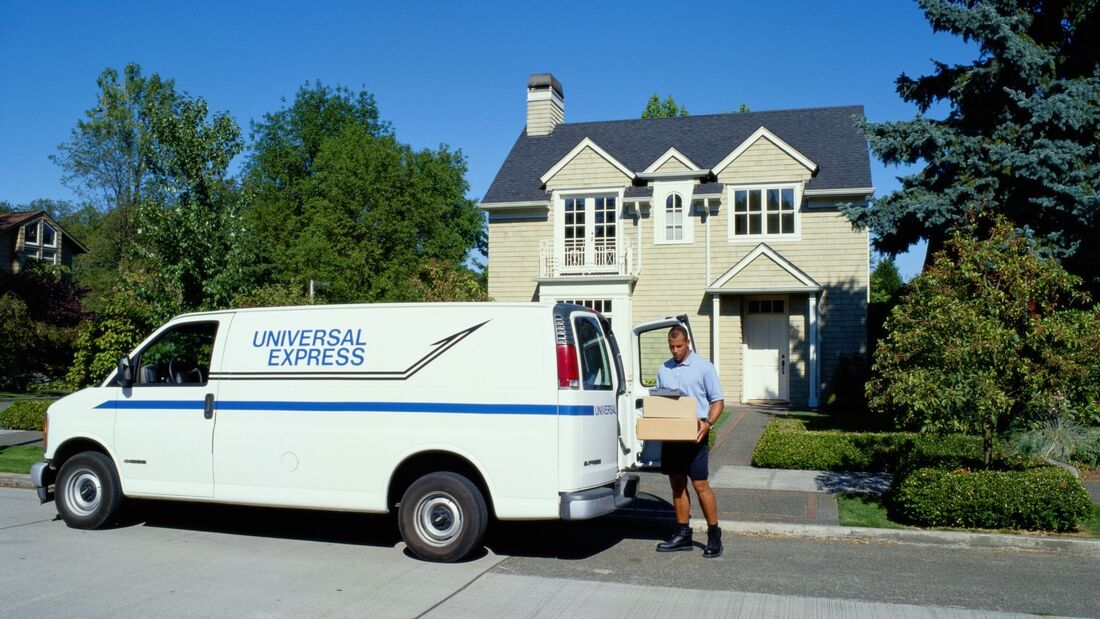








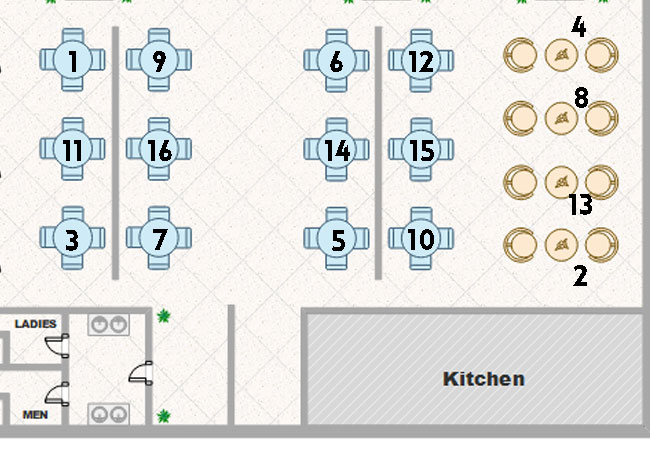
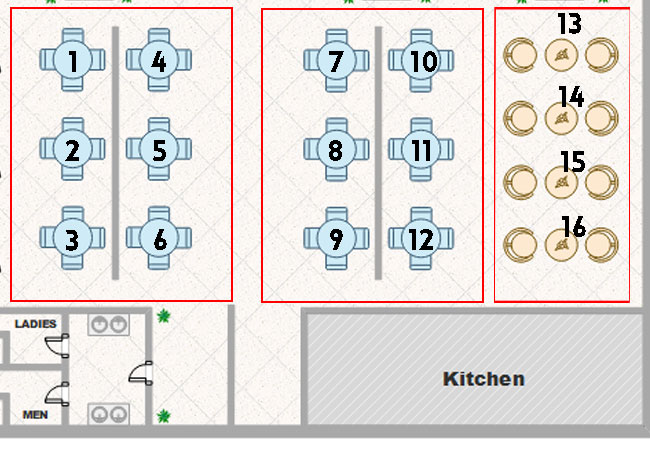





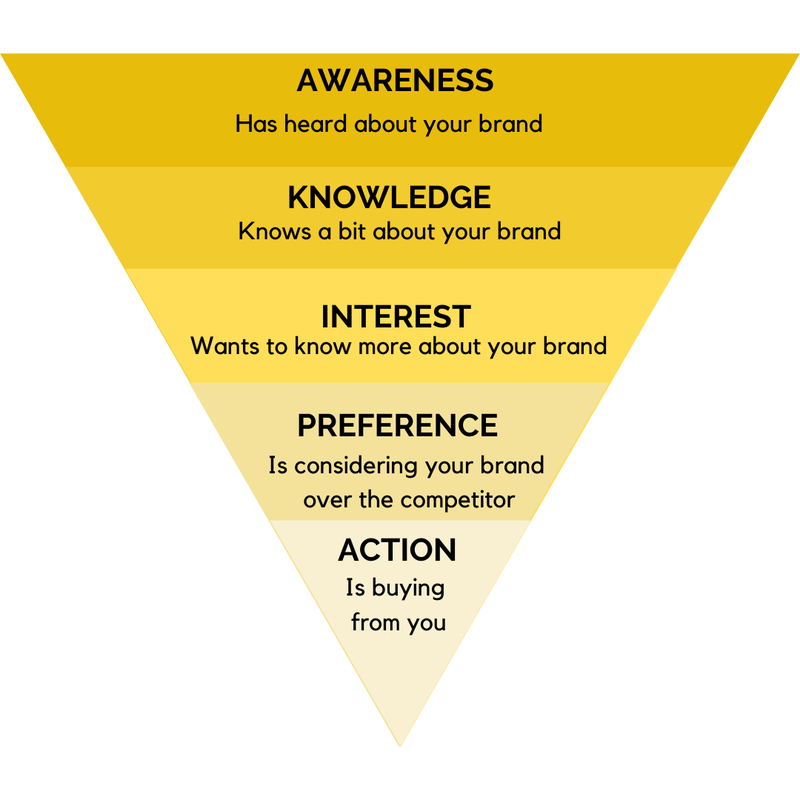
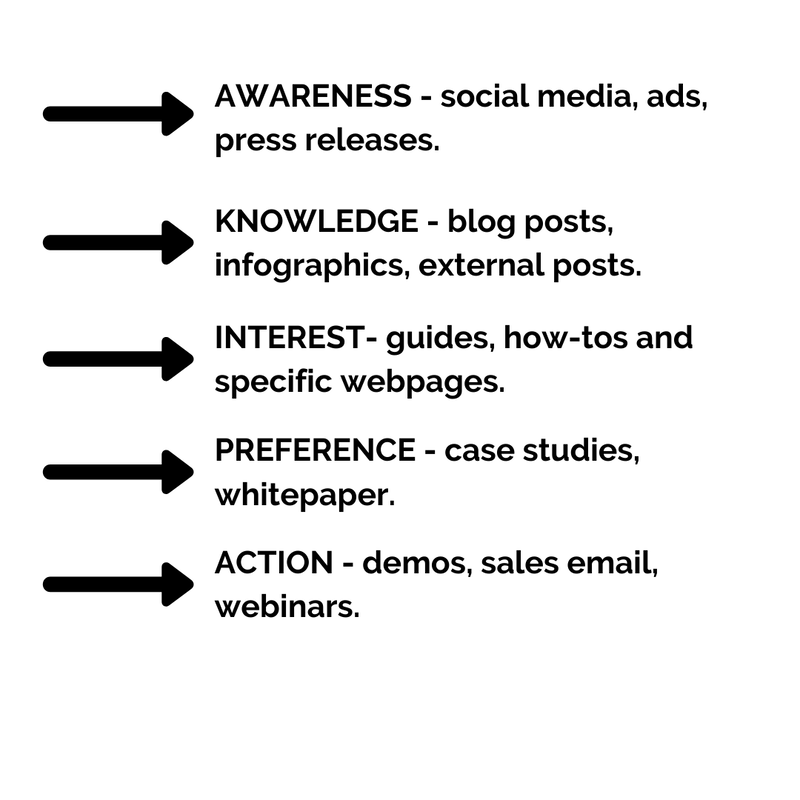

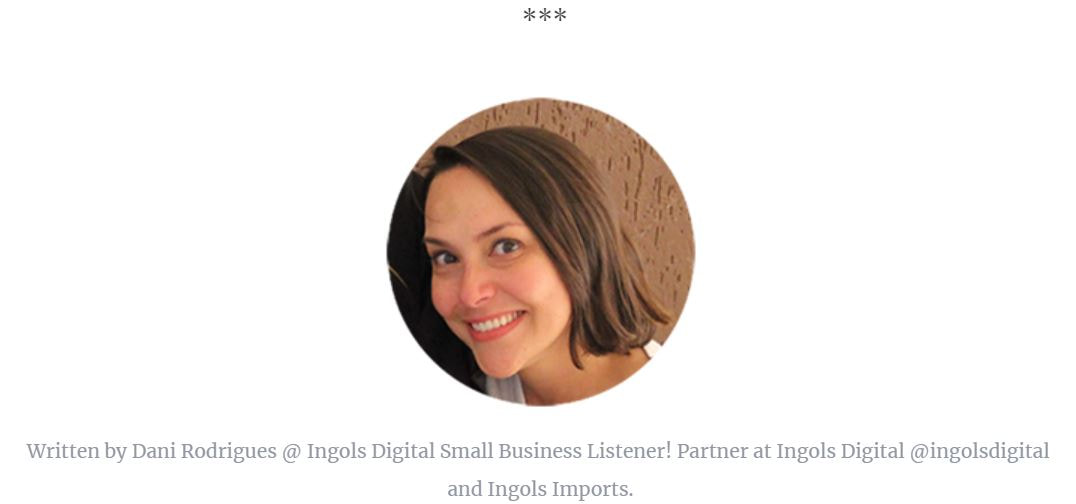




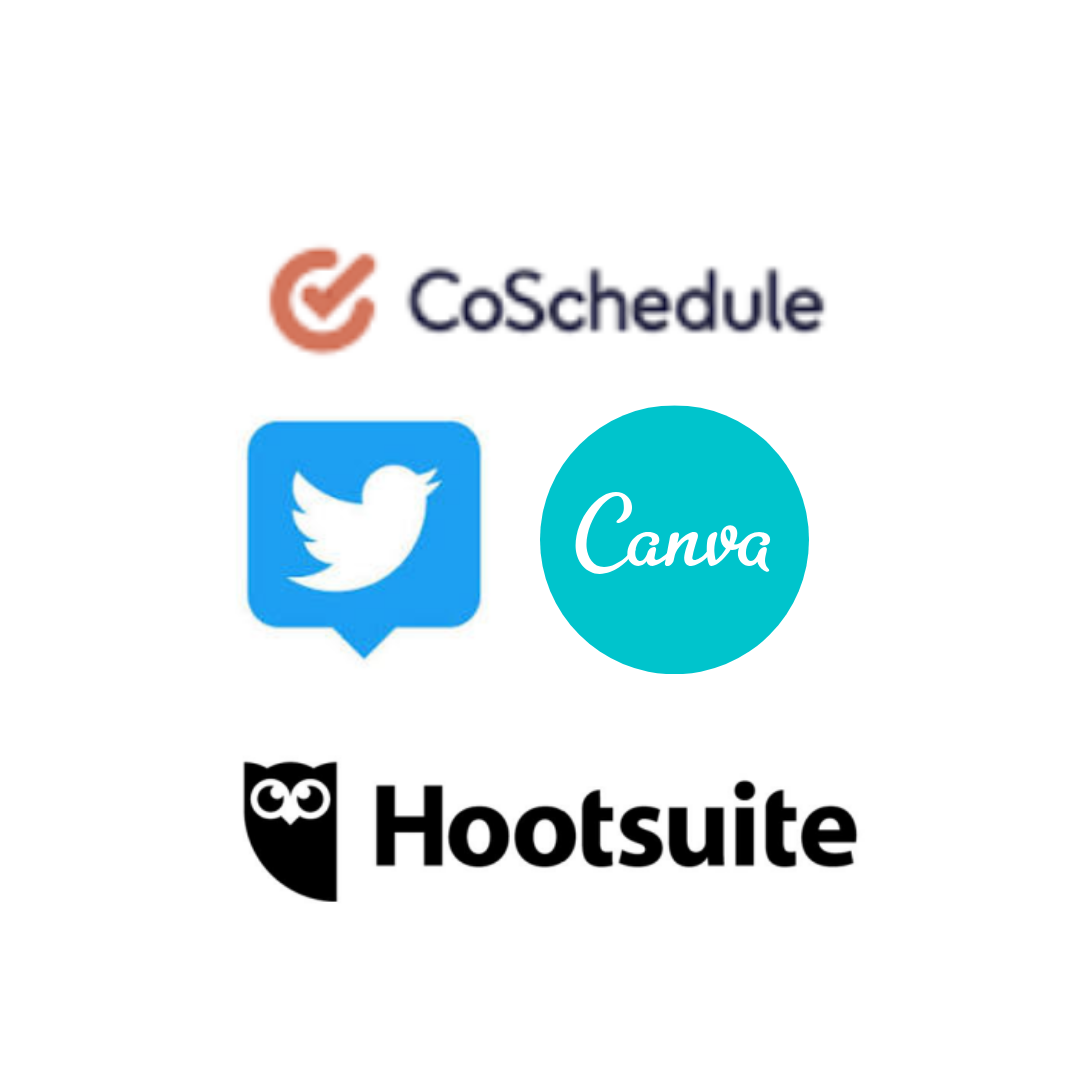
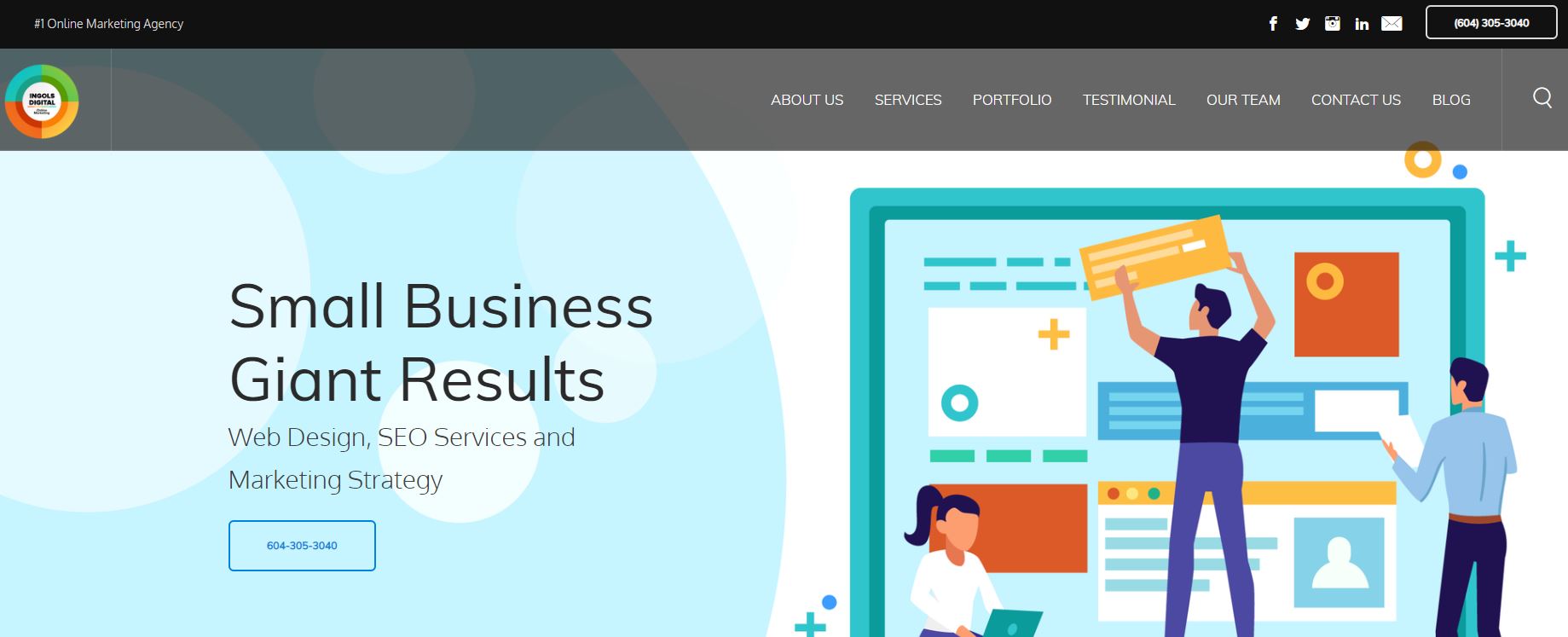





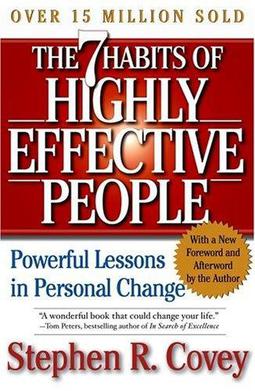
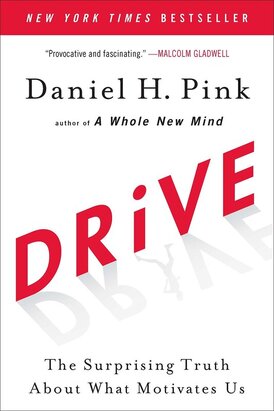
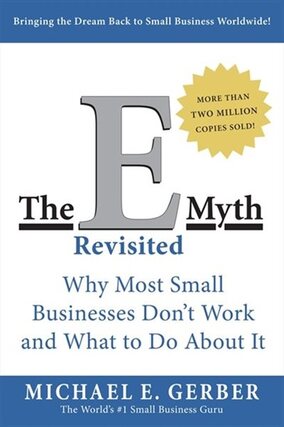
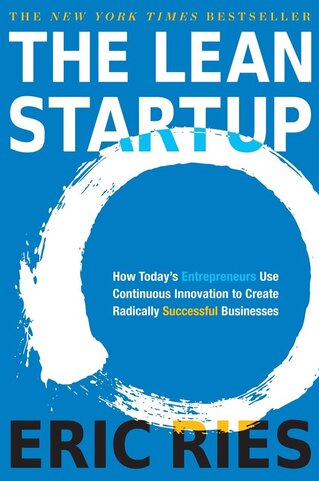
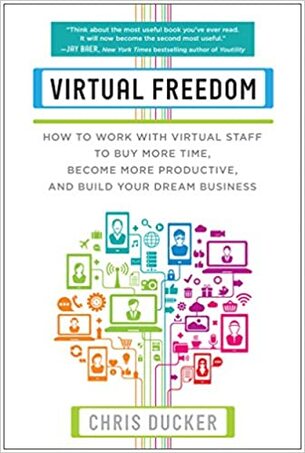




 RSS Feed
RSS Feed
6/11/2020
2 Comments